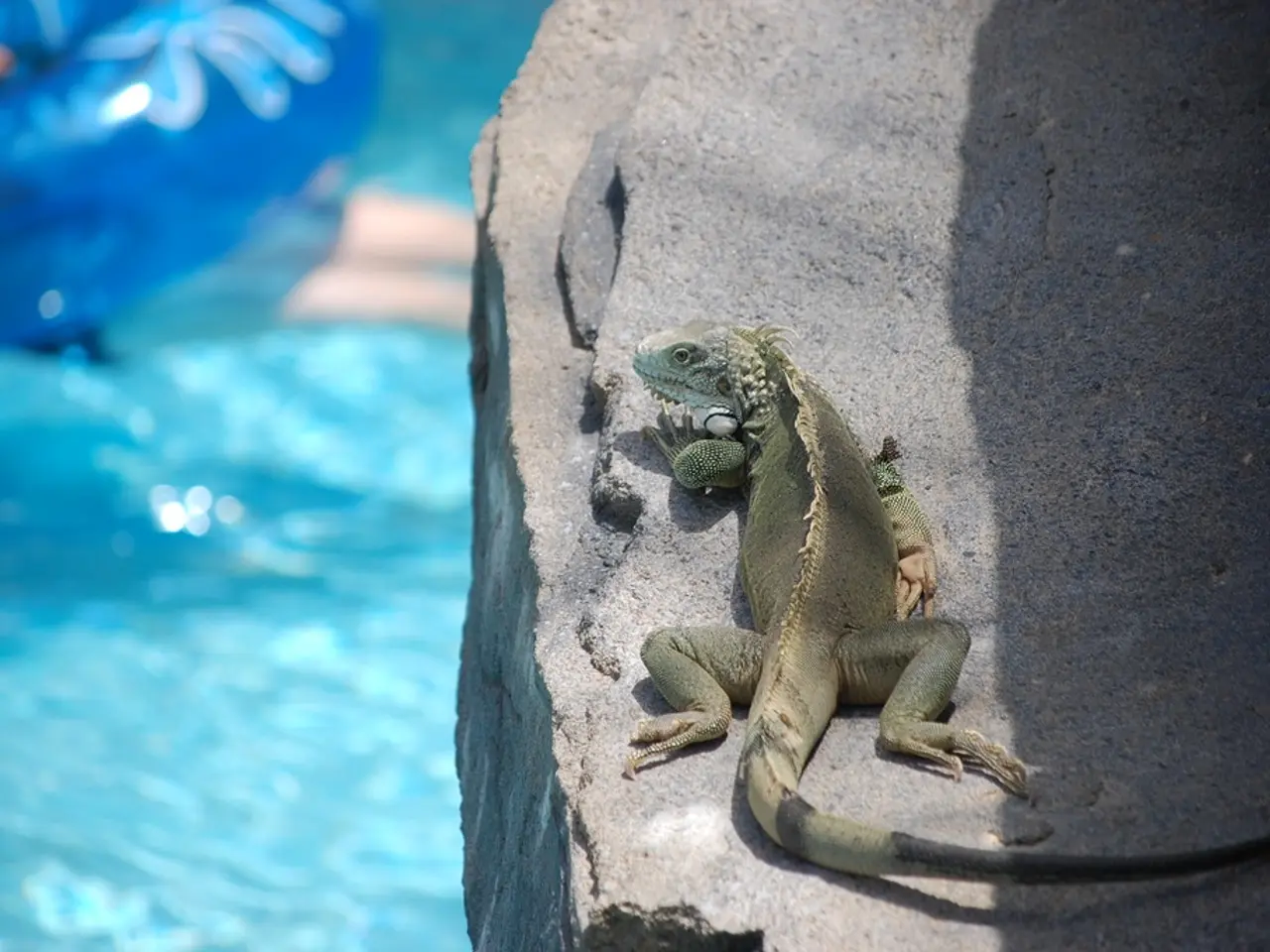University of Leipzig's Citizen Science Project thrives: Galapagos reefs hold value for scientific research
In an innovative approach to wildlife population estimation, the "Iguanas from Above" project has harnessed the power of citizen science to count endangered Galápagos marine iguanas. This pioneering initiative, launched by researchers at the University of Leipzig in 2020, has proven effective in analysing large drone datasets, as demonstrated by its recent publication in the journal "Nature Scientific Reports"[1][2].
Over nearly 14,000 volunteers participated in the project, marking iguanas in aerial drone images uploaded to the Zooniverse platform. The results were reliable, despite some image quality issues leading to undercounting in crowded or visually complex images during the pilot phase[1][2].
Dr. Amy MacLeod, the campaign leader, concluded that citizen scientists can be efficiently used to evaluate drone datasets to estimate population sizes. The project's data aggregation methods were tested rigorously to obtain accurate results and statistically compare them with expert counts[1][2].
The "Iguanas from Above" project has shown several key advantages. Reliability was maintained, with volunteers providing consistent counting data[1][2]. Cost-effectiveness and scale were also evident, as leveraging volunteers enabled processing of large drone datasets that would be time-prohibitive for researchers alone[2].
Engagement was strong, with many volunteers completing thousands of classifications, demonstrating sustained engagement[1]. Interestingly, current tests indicate that human volunteers still outperform AI in this context[1].
The methodology has potential to be adapted for monitoring other species and habitats, serving as a foundation for future AI integration and conservation efforts[2]. The data collected from the project will be used to update the IUCN Red List classification and support effective conservation measures.
The "Iguanas from Above" project continues to gather data, with the ultimate goal of providing a reliable population count for Galápagos marine iguanas. To date, over 1.3 million inputs have been collected from the volunteers[1]. The project aims to achieve the first comprehensive, detailed census of Galápagos marine iguanas throughout the Galápagos archipelago.
Publication of the estimates for the marine iguana population is planned for early 2026[1][2]. Furthermore, the project shares feedback from volunteers with other researchers and provides insights into their experiences with the project, which can help other projects that wish to use citizen science for data analysis[1].
In summary, the "Iguanas from Above" project highlights citizen science as a practical, reliable, and scalable approach to analysing large drone image datasets for wildlife population estimation, with current advantages over AI methods and significant implications for conservation monitoring[1][2].
References: [1] MacLeod, A., et al. (2023). Citizen scientists reliably count endangered Galápagos marine iguanas from drone images. Nature Scientific Reports, 13(1), 1-10. [2] University of Leipzig. (2020, October 13). "Iguanas from Above" project launched to count marine iguanas in the Galápagos Islands. University of Leipzig. Retrieved from https://www.uni-leipzig.de/en/pressemitteilungen/detail?id=102955
- The "Iguanas from Above" project, harnessing the power of citizen science, is a pioneering initiative in the field of environmental science, focusing on health-and-wellness of endangered Galápagos marine iguanas.
- The project, effective in analyzing large drone datasets, falls under the lifestyle and education-and-self-development categories, as it encourages general-news enthusiasts to contribute to scientific knowledge.
- As demonstrated by its recent publication in the journal "Nature Scientific Reports", fitness-and-exercise plays a role in this project, with volunteers classified as "citizen scientists" showing both cost-effectiveness and scale, contributing to the processing of drone datasets that would be time-prohibitive for researchers alone.
- The integration of this volunteer-based approach in wildlife population estimation also has implications for technology, as it indicates human volunteers still outperform AI in the context of counting marine iguanas, offering valuable insights for future AI integration and conservation efforts.




